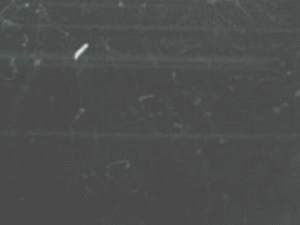Linear energy transfer
Linear energy transfer (LET) is a measure of the energy released by ionizing radiation as it travels through a medium. It is defined as the amount of energy deposited per unit length of the path of the radiation. LET is an important concept in radiation physics, radiation biology, and medical physics.
Definition[edit | edit source]
Linear energy transfer is typically expressed in units of keV/μm. It quantifies the energy transferred from ionizing particles to the material they pass through, which can be crucial for understanding the biological effects of radiation.
Types of Radiation[edit | edit source]
Different types of ionizing radiation have different LET values:
- Alpha particles: These have a high LET because they are heavy and carry a double positive charge, causing them to lose energy rapidly as they travel through matter.
- Beta particles: These have a lower LET compared to alpha particles because they are lighter and carry a single negative charge.
- Gamma rays and X-rays: These have very low LET values because they are electromagnetic waves and interact less frequently with matter.
Biological Effects[edit | edit source]
The biological impact of radiation is closely related to its LET. High-LET radiation, such as alpha particles, causes dense ionization along its path, leading to more severe biological damage. Low-LET radiation, such as gamma rays, causes sparse ionization, resulting in less immediate damage but potentially more widespread effects.
Applications[edit | edit source]
LET is a critical parameter in various fields:
- In radiation therapy, understanding LET helps in optimizing treatment plans to maximize damage to cancer cells while minimizing harm to surrounding healthy tissue.
- In radiation protection, LET is used to assess the potential health risks of different types of radiation exposure.
- In space exploration, LET is considered when evaluating the radiation hazards astronauts face from cosmic rays and solar particle events.
Measurement[edit | edit source]
LET can be measured using various techniques, including:
Related Concepts[edit | edit source]
- Relative biological effectiveness (RBE): A measure of the biological damage caused by radiation, which depends on LET.
- Dose equivalent: A quantity used in radiation protection to account for the biological effect of radiation, which incorporates LET.
See Also[edit | edit source]
- Ionizing radiation
- Radiation dosimetry
- Radiation therapy
- Radiation protection
- Relative biological effectiveness
References[edit | edit source]
External Links[edit | edit source]
Search WikiMD
Ad.Tired of being Overweight? Try W8MD's physician weight loss program.
Semaglutide (Ozempic / Wegovy and Tirzepatide (Mounjaro / Zepbound) available.
Advertise on WikiMD
|
WikiMD's Wellness Encyclopedia |
| Let Food Be Thy Medicine Medicine Thy Food - Hippocrates |
Translate this page: - East Asian
中文,
日本,
한국어,
South Asian
हिन्दी,
தமிழ்,
తెలుగు,
Urdu,
ಕನ್ನಡ,
Southeast Asian
Indonesian,
Vietnamese,
Thai,
မြန်မာဘာသာ,
বাংলা
European
español,
Deutsch,
français,
Greek,
português do Brasil,
polski,
română,
русский,
Nederlands,
norsk,
svenska,
suomi,
Italian
Middle Eastern & African
عربى,
Turkish,
Persian,
Hebrew,
Afrikaans,
isiZulu,
Kiswahili,
Other
Bulgarian,
Hungarian,
Czech,
Swedish,
മലയാളം,
मराठी,
ਪੰਜਾਬੀ,
ગુજરાતી,
Portuguese,
Ukrainian
Medical Disclaimer: WikiMD is not a substitute for professional medical advice. The information on WikiMD is provided as an information resource only, may be incorrect, outdated or misleading, and is not to be used or relied on for any diagnostic or treatment purposes. Please consult your health care provider before making any healthcare decisions or for guidance about a specific medical condition. WikiMD expressly disclaims responsibility, and shall have no liability, for any damages, loss, injury, or liability whatsoever suffered as a result of your reliance on the information contained in this site. By visiting this site you agree to the foregoing terms and conditions, which may from time to time be changed or supplemented by WikiMD. If you do not agree to the foregoing terms and conditions, you should not enter or use this site. See full disclaimer.
Credits:Most images are courtesy of Wikimedia commons, and templates, categories Wikipedia, licensed under CC BY SA or similar.
Contributors: Prab R. Tumpati, MD

